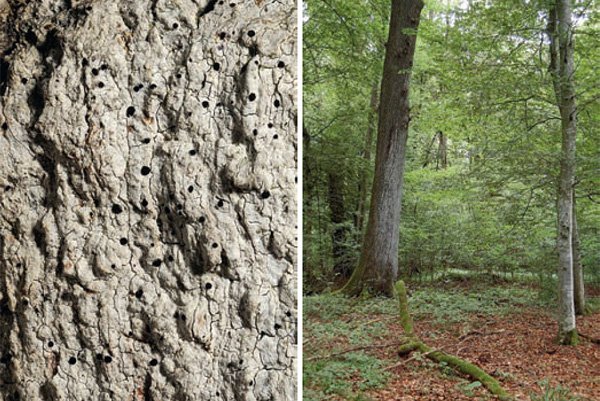Lichens are particular organisms: they consist of fungi and algae (and/or cyanobacteria). Together with the algal cells, the hyphens build a symbiotic relationship. In order to live, this "team" needs only light and humidity. Lichens can completely dry up without being damaged, tolerate enormous temperature differences, and can be found in all climatic regions. Worldwide, there are about 16’000 species.
On behalf of the Federal Office for the Environment FOEN, the Swiss Federal Research Institute WSL and the Geneva "Conservatoire et Jardin botaniques" established a Red List of the epiphytic and terricolous lichens being endangered in Switzerland. The disappointing outcome: almost 300 of the approximately 800 examined species are endangered.
It has been shown that the epiphyte lichens are more at risk than the terrestrial lichens. Almost every second species within this particular group is endangered. According to WSL expert Christoph Scheidegger, this is primarily due to the fact that lichens can often only spread over short distances and particularly suffer from changes within their environment. For the conservation of epiphytic lichens, primarily light, natural forests and old stands are needed. Favorable environmental conditions can be found in oak or chestnut forests, but virgin mountain forests are of international importance for the preservation of numerous epiphytic lichens. In contrast, terrestrial lichens depend on dry grassland, broken rock and gravel banks.
The flora of lichens is an important "bioindicator" which tells us a lot about the state and history of the landscape and air quality. Neighboring countries such as Germany and Austria recognized this earlier and established Red Lists. Switzerland can now also make use of this as an instrument for protection.
Translation: Dawn Meister, Stallikon
SwissLichens is currently working on the revision of the red list of lichens.



